What Is a Call Flow + Why Is It Important?
What Is a Call Flow + Why Is It Important?

Effective customer communication is pivotal for a business's success. To ensure customer calls are handled properly, receptionists or agents will often refer to something called a call flow.
In this post, we’ll break down what a call flow is, why it’s important, and pro tips on optimizing your call flows to ensure efficient customer service.
What is a call flow?
A call flow is essentially the roadmap guiding a conversation between a caller and a virtual receptionist or agent. It provides a structured path for an interaction, outlining how the conversation should unfold.
Think of it as a script that prompts agents on what to say, do, and ask based on the caller's questions or needs. This not only ensures consistency in customer interactions but also streamlines the resolution process. For example, if a customer calls about a technical issue, the call flow might provide troubleshooting prompts.
A call flow can also refer to how a call is routed through a system, usually using interactive voice response (IVR) to screen or direct calls. IVR acts as an initial filter, handling simple queries and directing calls to the appropriate agents. Once routed, agents follow their part of the call flow to address more complex caller needs.
Call flows typically take the form of a flowchart, giving an overview of the conversation process. Since calling customers don’t follow a script, integrating a call script software into your tech stack can be helpful, as it allows the script to capture a much wider range of scenarios.
Alternatively, by using virtual receptionists like from Smith.ai, call flows are driven by AI technology so conversations are both naturally-sounding and effectively handled.
Why is a call flow important?
A well-crafted call flow is very important for customer-facing businesses. Here are a few key reasons why it's crucial for effective customer interactions:
- Reduces errors: By following a predetermined script, agents are less likely to overlook key information or provide inconsistent responses.
- Ensures proper routing: With calls directed to the appropriate department or agent, it saves time and boosts the efficiency of the entire communication process.
- Increases efficiency: By providing a structured path, agents can navigate through conversations more quickly and accurately. This can also save agents time and energy, boosting their productivity.
- Boosts caller satisfaction: When customers experience a smooth interaction over the phone, it contributes to a positive customer experience.
9 essential parts of a call flow
A call flow will be unique to each business, but will typically include these nine essential elements.

1. Screen and routing
The first element of a call flow is often the IVR system. Serving as the initial point of contact for calling customers, the IVR uses simple prompts such as "Press 1 for technical support" to efficiently screen and direct calls. This intelligent call routing system filters through different options to identify the customer's inquiry and route it to the appropriate agent.
On the other hand, artificial intelligence has emerged as an innovative tool for call screening and routing. Take our latest AI Receptionist, which is equipped with advanced conversational technologies to manage phone calls autonomously. Not only can it handle whole phone conversations on its own, but it can also be used to screen and route calls to human agents.
2. Greeting
The greeting sets the tone for the entire conversation. When an agent answers a phone call, it should be warm, professional, and tailored to the nature of the call. Check out some of these receptionist greeting scripts for inspiration.

3. Authentication
To ensure security and privacy, this step involves confirming the caller's identity by verifying specific information, such as their phone number or address.
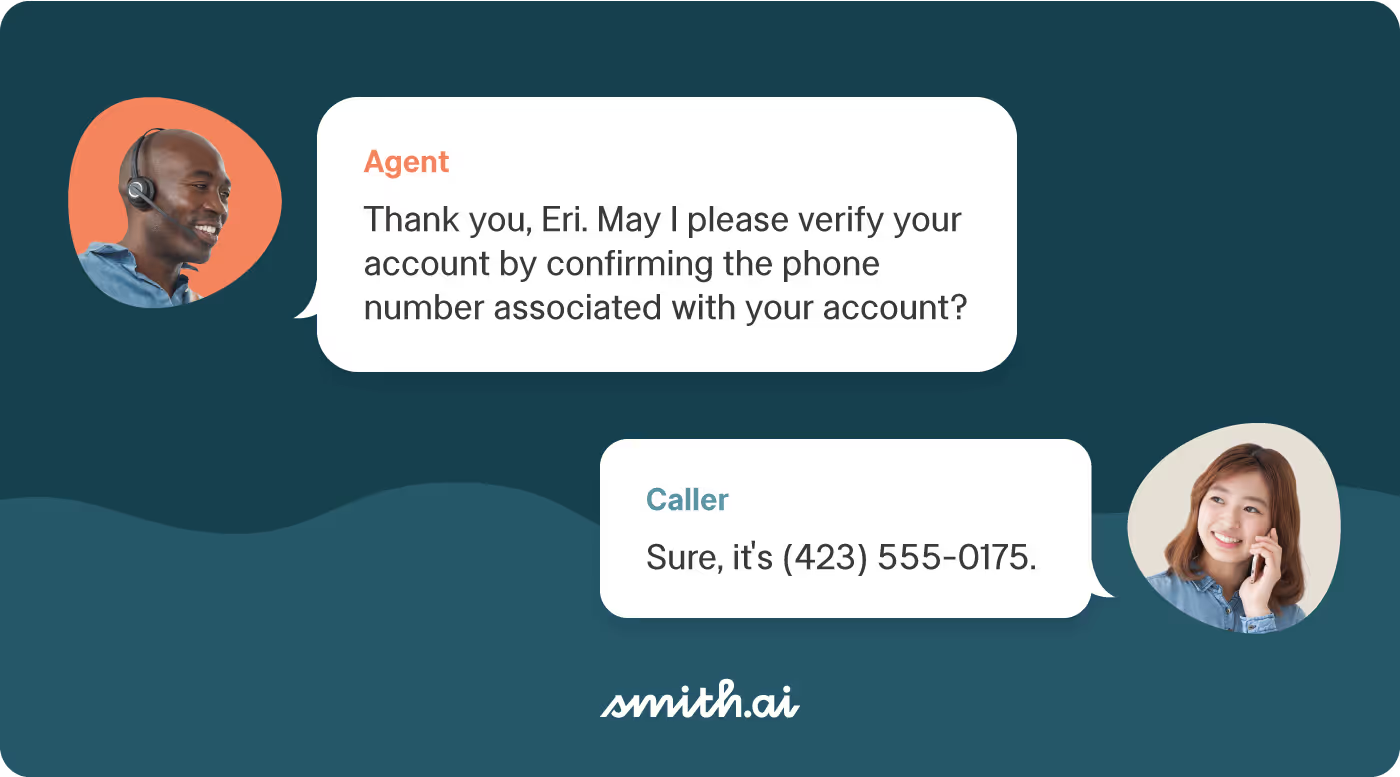
4. Call driver
The call driver is the reason for the customer’s call. Understanding the caller's purpose allows the agent to tailor the conversation accordingly.

5. Empathy
After identifying the call driver, showing empathy is crucial. This humanizes the interaction, making the customer feel understood and valued. Here are a few actionable tips for agents to tap into empathy:
- Active listening: Pay full attention to the customer, demonstrating genuine interest in their concerns.
- Validate feelings: Acknowledge the customer's emotions and concerns, showing that their feelings are understood.
- Use empathetic language: Choose words and phrases that convey understanding and support.
- Express apologies when necessary: If the situation warrants it, offer a sincere apology to show empathy for any inconvenience or frustration.
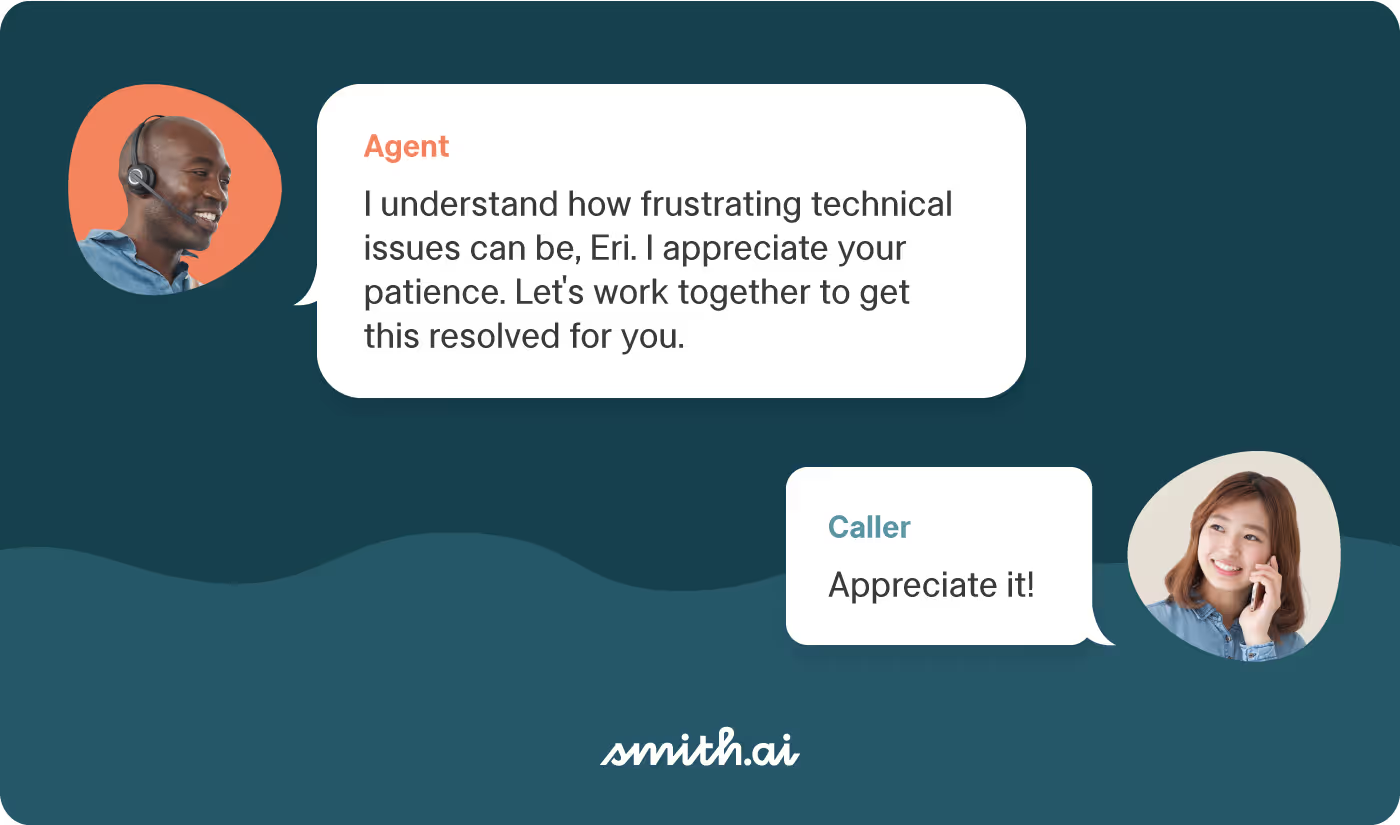
6. Transition
Once the reason for the call is established, the agent transitions to the appropriate path, guiding the conversation toward resolution. To ensure the transition is effective, have relevant resources easily accessible for agents, like troubleshooting guides or FAQs.

7. Troubleshoot
This is the heart of the call flow, where the agent takes necessary steps to address the caller's issue. The troubleshooting process can vary based on the nature of the problem.
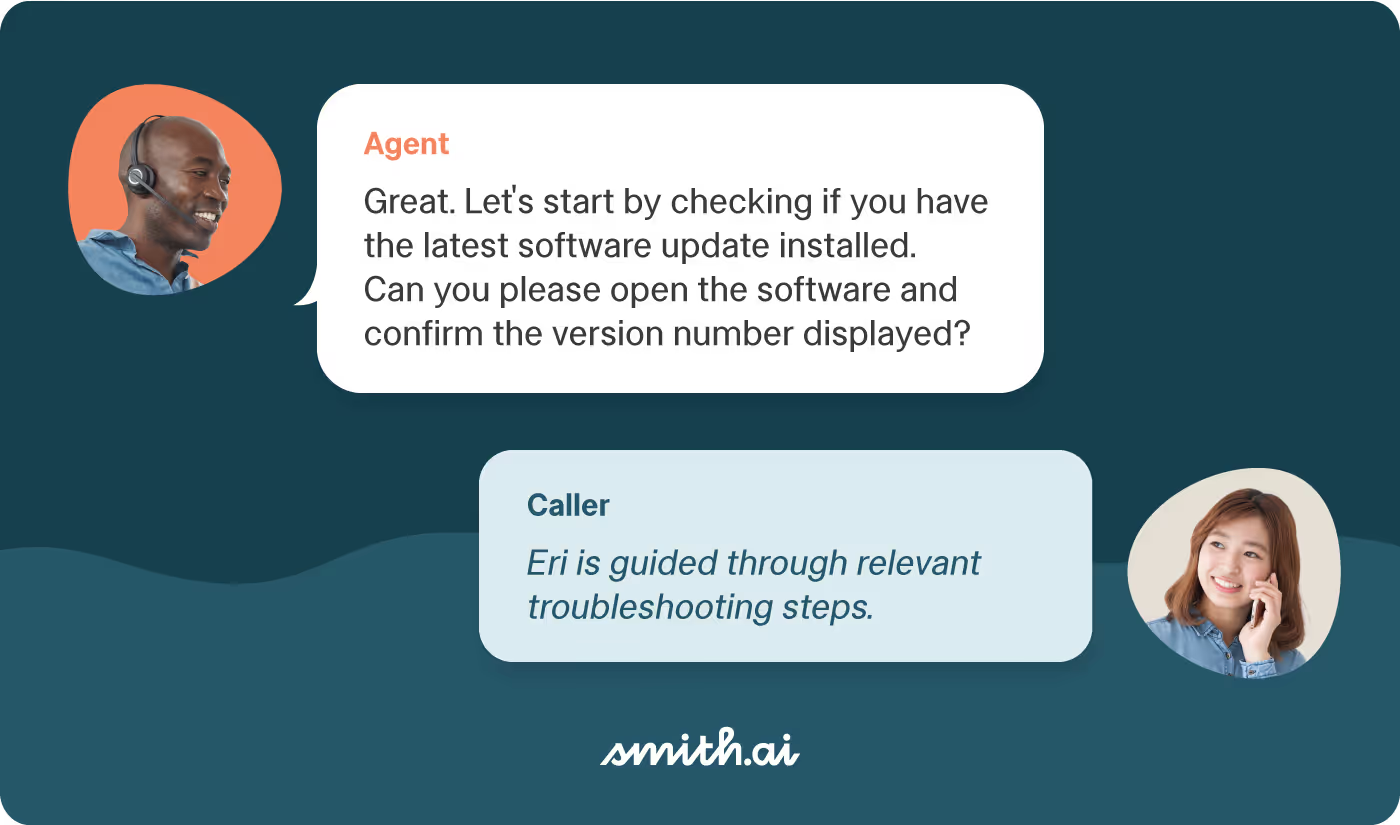
8. Summary
After resolving the issue, the agent provides a concise summary to the caller, confirming their satisfaction and ensuring clarity on the resolution.
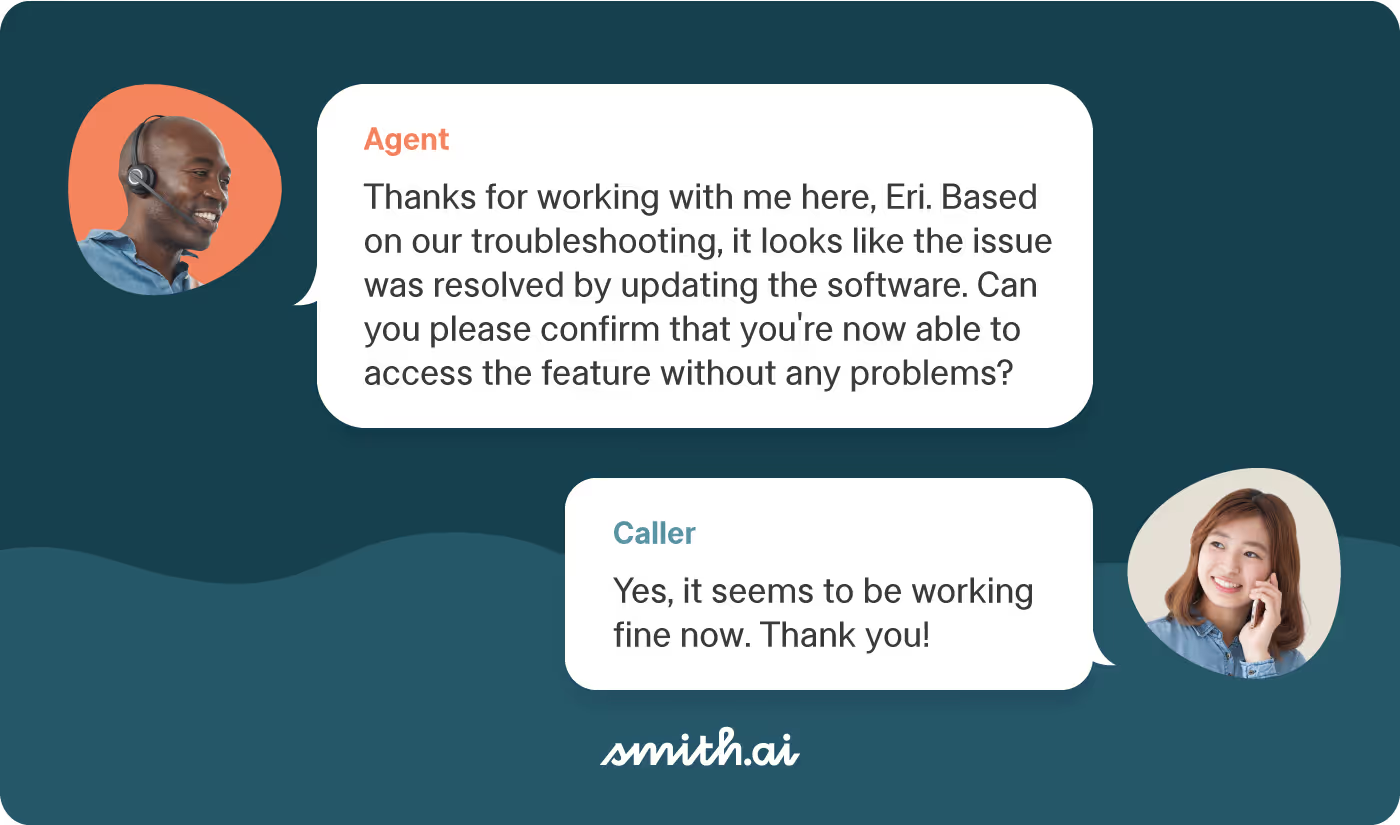
9. Branding
This involves expressing gratitude, thanking the customer for their time, and subtly reinforcing the company's brand by stating the company name.
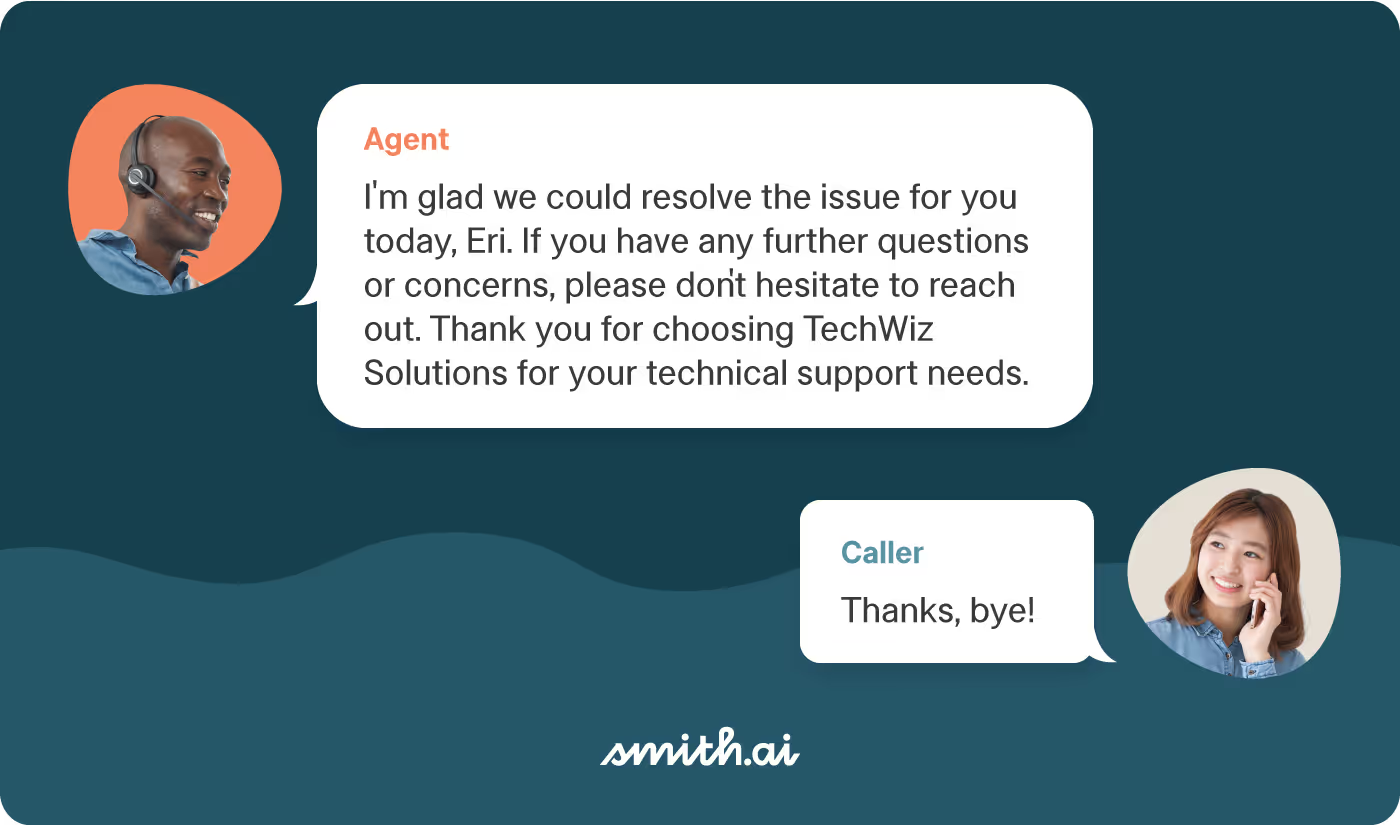
Tips for creating effective call flows
Call flows are designed to streamline communication between businesses and customers. To help make your call flow as effective as possible, follow these tips below.
- Follow a script: Following a script ensures consistency in communication. It minimizes the chances of agents deviating from the intended path and provides a standardized experience for callers.
- Consider all potential outcomes: Anticipate and plan for various scenarios in the call flow. This ensures agents are equipped to handle a wide range of customer inquiries and issues.
- Analyze past calls: Learn from past interactions. Analyzing previous calls helps identify areas for improvement in the call flow and ensures continuous refinement based on real-world experiences.
- Track call flow metrics: Regularly monitor and analyze call flow metrics to identify patterns and areas that may need adjustment. Metrics such as call duration, resolution time, and customer satisfaction scores provide valuable insights.
- Save time with virtual receptionists: Introduce the convenience of AI into your call flow. Innovative solutions like our AI-backed virtual receptionists can significantly optimize call-handling processes.
Optimize your call flows with Smith.ai
A well-structured call flow is the backbone of effective customer communication. By building your own tailored call flow, you can empower your agents and foster seamless customer service.
Maximize your call flow efficiency with our 24/7 live agents. Our AI feature utilizes cutting-edge conversational technology to handle calls and qualify leads, while our virtual receptionists serve as the human element for optimal customer support.
Contact us for a free 30-minute consultation and discover how Smith.ai can transform your business communication.
Take the faster path to growth. Get Smith.ai today.
Key Areas to Explore
Technical Implementation Terms
Voice user interface (VUl) design
Speech recognition integration
Text-to-speech optimization
API connectivity and webhooks
Real-time data synchronization

Your submission has been received!










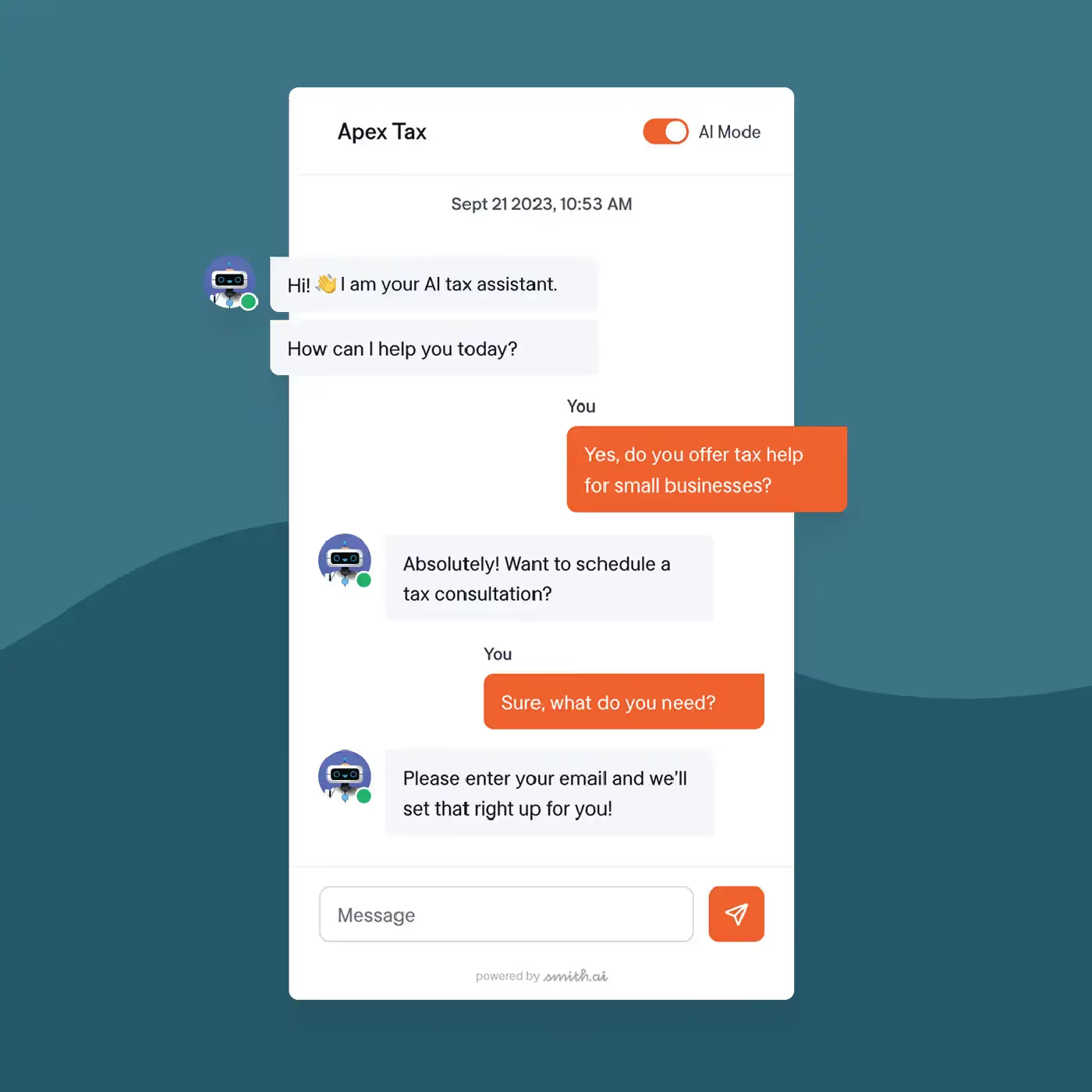



.svg)



